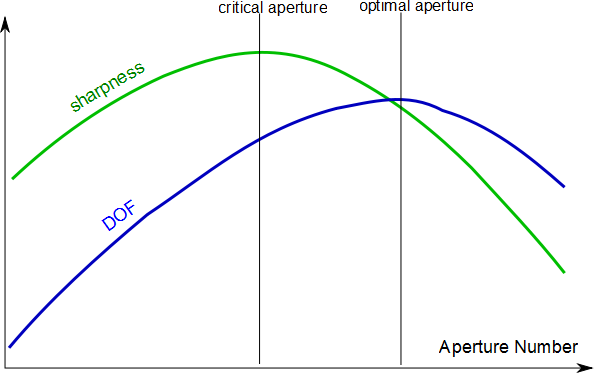Distance between the object side principal point and the object.
For larger distances, this is about the working distance
Archives
Object to image distance
Optical Density
Optical density is a measure used for filters to describe how much light of a blocked wavelength still passes the filter
Abbreviation: ODn
the optical density is given by the formula:
ODn = 10^-n = 1/10^n
ODn = 10^-n = 1/10^n
OD0 = 10^-0 = 1/10^0 = 1 = 100% light passes
OD1 = 10^-1 = 1/10^1 = 0.1 = 10% light passes
OD2 = 10^-2 = 1/10^2 = 0.01 = 1% light passes
OD3 = 10^-3 = 1/10^3 = 0.001 = 0.1% light passes
OD4 = 10^-4 = 1/10^4 = 0.0001 = 0.01% light passes
OD1 = 10^-1 = 1/10^1 = 0.1 = 10% light passes
OD2 = 10^-2 = 1/10^2 = 0.01 = 1% light passes
OD3 = 10^-3 = 1/10^3 = 0.001 = 0.1% light passes
OD4 = 10^-4 = 1/10^4 = 0.0001 = 0.01% light passes
The optical density is an input value, demanded by the Application.
OD2 equals 1 percent.
For a camera of 256 intensity levels this equals 2.6 intesity values. This is not much stronger than the sensor noise.
For a camera of 256 intensity levels this equals 2.6 intesity values. This is not much stronger than the sensor noise.
OD3 entspricht 0.1 Prozent.
For a camera of 256 intensity levels this equals 0.26 intesity values. This is less than the sensor noise.
The higher the number the better the blocking.
The higher the number the more expensive the filter.
The higher the number the more expensive the filter.
Typical values for comemrcial filters are OD2,
higher quality filters have OD3
Filters ilters for outdoor use might need OD4 or higher to block too intensive sunlight.
higher quality filters have OD3
Filters ilters for outdoor use might need OD4 or higher to block too intensive sunlight.
For a + b = c we get ODa + ODb = ODc
so you can generater an OD6 filter by two OD3 filters. However, the optics should be prepared for the thicker glass then.
so you can generater an OD6 filter by two OD3 filters. However, the optics should be prepared for the thicker glass then.
optical magnification
May the width of an object be 1.6mm and the sensor width = 4.8mm
Then

Then
May the width of an object be 36mm and the sensor width = 3.6mm
Then

Then
Optimal Aperture
orthographic
orthographic lenses are a type of fisheye lenses
orthographic lenses are also called” hemispherical“or “orthographisch”
orthographic lenses use an image mapping function of type

maintains planar illuminance
| Type : orthographic | weak | medium | strong | max |
|---|---|---|---|---|
| angles | 66° | 90° | 120° | < 180° |
An orthographic / hemispherical fisheye, uses a parallel projection of a hemisphere onto a plane. The resulting image will obviously be circular. The widest view angle is 180 degrees. At +/-90 degrees extreme distortion will occur. Due to this heavy distortion it’s less often used than f-Theta / angular fisheye.
see:
fisheye types

![hemi180[1]](https://www.optowiki.info/wp-content/uploads/2016/02/hemi1801.gif)